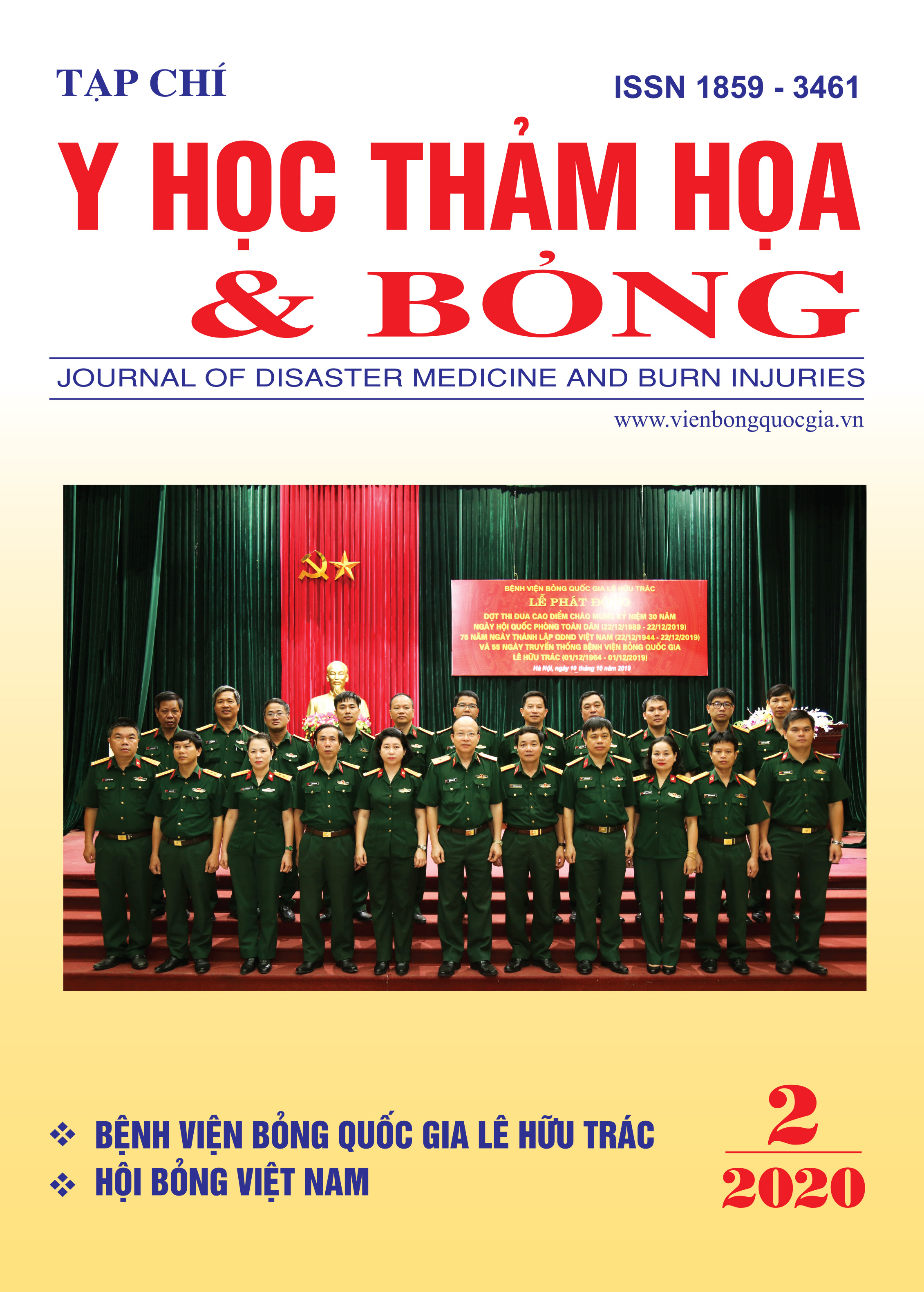Kết quả bước đầu ứng dụng kỹ thuật hút mỡ làm mỏng vạt da trong phẫu thuật tạo hình thẩm mỹ
Nội dung chính của bài viết
Tóm tắt
Làm mỏng vạt da là cần thiết để đảm bảo phù hợp với độ dày vùng cần tạo hình. Tuy vậy, việc làm mỏng vạt vẫn chưa được nhiều tác giả trong và ngoài nước chú ý đến. Hầu hết các tác giả đều nhất trí sử dụng kỹ thuật làm mỏng vạt bằng kéo dựa trên một công bố của tác giả Hyakusoku và cộng sự năm 1994.
Chúng tôi lần đầu tiên đã ứng dụng kỹ thuật hút mỡ làm mỏng vạt trên 03 bệnh nhân, sử dụng vạt nhánh xuyên động mạch thượng vị dưới sâu tự do, vạt nhánh xuyên động mạch cổ nông, vạt nhánh xuyên động mũ vai tự do.
Kết quả các vạt đều sống hoàn toàn, vết mổ liền kỳ đầu, tạo được vạt phù hợp với yêu cầu tạo hình, duy trì các đặc tính về chức năng và thẩm mỹ của vạt da.
Chi tiết bài viết
Tài liệu tham khảo
1. Hyakusoku H. and Gao J.-H. (1994) The “super-thin” flap. British journal of plastic surgery.47 (7): 457-464.
2. Chetboun A. and Masquelet A. C. (2007) Experimental animal model proving the benefit of primary defatting of full-thickness random-pattern skin flaps by suppressing “perfusion steal”. Plastic and reconstructive surgery.120 (6): 1496-1502.
3. Ogawa R. and Hyakusoku H. (2008) Flap thinning technique: The effect of primary flap defatting. Plastic and reconstructive surgery.122 (3): 987-988.
4. Ohjimi H., Taniguchi Y., Kawano K.. et al. (2000) A comparison of thinning and conventional free-flap transfers to the lower extremity. Plastic and reconstructive surgery.105 (2): 558-566.
5. Kimura N., Satoh K. and Hosaka Y. (2003) Microdissected Thin Perforator Flaps:: 46 Cases. Plastic and reconstructive surgery.112 (7): 1875-1885.
6. Askouni E. P., Topping A., Ball S.. et al. (2012) Outcomes of anterolateral thigh free flap thinning using liposuction following lower limb trauma. Journal of plastic, reconstructive & aesthetic surgery.65 (4): 474-481.
2. Chetboun A. and Masquelet A. C. (2007) Experimental animal model proving the benefit of primary defatting of full-thickness random-pattern skin flaps by suppressing “perfusion steal”. Plastic and reconstructive surgery.120 (6): 1496-1502.
3. Ogawa R. and Hyakusoku H. (2008) Flap thinning technique: The effect of primary flap defatting. Plastic and reconstructive surgery.122 (3): 987-988.
4. Ohjimi H., Taniguchi Y., Kawano K.. et al. (2000) A comparison of thinning and conventional free-flap transfers to the lower extremity. Plastic and reconstructive surgery.105 (2): 558-566.
5. Kimura N., Satoh K. and Hosaka Y. (2003) Microdissected Thin Perforator Flaps:: 46 Cases. Plastic and reconstructive surgery.112 (7): 1875-1885.
6. Askouni E. P., Topping A., Ball S.. et al. (2012) Outcomes of anterolateral thigh free flap thinning using liposuction following lower limb trauma. Journal of plastic, reconstructive & aesthetic surgery.65 (4): 474-481.


